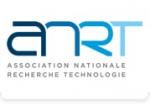Ecofriendly Sulfur–Limonene Cathodes for High-Performance Lithium–Sulfur Batteries (EcoSLim-HSB)
| ABG-134155 | Master internship | 6 months | legal minimum internship allowance |
| 2025-11-03 |

- Materials science
- Physics
Employer organisation
Supervisors:
Safa Gharbi, Mariam Ezzedine, Costel-sorin Cojocaru (LPICM)
Sandrine Tusseau-Nenez (LPMC)
Description
Lithium–sulfur (Li–S) systems are considered among the most promising next-generation batteries, offering a high theoretical energy density of 2,600 Wh kg⁻¹ 1. Nonetheless, Li–S batteries still face persistent challenges that hinder their practical implementation, including the intrinsic insulating nature of sulfur and its final lithiated product (Li₂S), as well as the dissolution and migration of intermediate lithium polysulfides2.
To tackle these limitations, our previous work at LPICM focused on modifying the conventional sulfur–carbon electrode architecture with additives by developing a hybrid nanostructured electrode composed of vertically aligned carbon nanotubes (VACNTs) decorated with sulfur. This architecture enhances electrical conductivity and provides short lithium-ion pathways3. However, conventional sulfur infiltration into VACNTs typically relies on solvent such as dimethylformamide (DMF)4, N-methyl-2-pyrrolidone (NMP)5, or carbon disulfide (CS₂)6. These solvents, especially CS2, are highly toxic to humans, causing neurological and reproductive harm, and environmentally hazardous due to their volatility and persistence.
To avoid the use of toxic solvents and simultaneously mitigate polysulfide dissolution in a sustainable approach, strategies based on immobilizing polysulfides via redox-active moieties have been proposed. These approaches include copolymerization with crosslinkers such as 1,3-diisopropenylbenzene (DIB), limonene, and squalene7.
Building on this concept, this project aims to establish sulfur-limonene (S-Limo) copolymers as sustainable and efficient cathode materials. S-Limo can be synthesized directly from elemental sulfur, an abundant resource in the Earth’s crust, and d-limonene, a byproduct of the citrus industry, via a simple one-pot chemical reaction. Limonene is particularly attractive due to its renewable, low-cost, and non-toxic nature, as well as its ability to form stable covalent bonds with sulfur (C–S), which enhances uniform sulfur dispersion, mitigates the polysulfide shuttle effect, and improves the electrochemical performance of the cathode8.
To deeply understand and confirm the formation of C–S bonds in the synthesized composite, comprehensive X-ray diffraction (XRD) analysis will be conducted in close collaboration with LPMC. Electron microscopy will be employed to study the infiltration of the copolymer within the nanostructured electrode. Following characterization, the composite will be integrated into the VACNTs, that is entirely binder- and additive-free, thus eliminating the use of toxic solvents. Coin cells will then be assembled to perform cycling tests and evaluate the electrochemical performance of this green Li–S battery technology.
Profile
The internship is open to an engineering student or a Master’s level (M2) student in materials science, electrochemistry, or related fields. The candidate should have solid knowledge of electrochemistry, batteries, and characterization methods, as well as strong analytical, synthesis, and communication skills, with proficiency in French and English.
---------------------------------------------
---------------------------------------------
The objective of this internship is to synthesize a sulfur-limonene copolymer and integrate it into the VACNTs. The intern will then carry out an in-depth physico-chemical characterization of the material, notably by electron microscopy and X-ray diffraction (XRD), as well as electrochemical analyses to determine the capacity, stability, and efficiency of the developed system.
Starting date
Vous avez déjà un compte ?
Nouvel utilisateur ?
Get ABG’s monthly newsletters including news, job offers, grants & fellowships and a selection of relevant events…
Discover our members
 ADEME
ADEME  TotalEnergies
TotalEnergies  Institut Sup'biotech de Paris
Institut Sup'biotech de Paris  ANRT
ANRT  Aérocentre, Pôle d'excellence régional
Aérocentre, Pôle d'excellence régional  Nokia Bell Labs France
Nokia Bell Labs France  ONERA - The French Aerospace Lab
ONERA - The French Aerospace Lab  CASDEN
CASDEN  MabDesign
MabDesign  CESI
CESI  ASNR - Autorité de sûreté nucléaire et de radioprotection - Siège
ASNR - Autorité de sûreté nucléaire et de radioprotection - Siège  Groupe AFNOR - Association française de normalisation
Groupe AFNOR - Association française de normalisation  PhDOOC
PhDOOC  MabDesign
MabDesign  Ifremer
Ifremer  Généthon
Généthon  SUEZ
SUEZ  Laboratoire National de Métrologie et d'Essais - LNE
Laboratoire National de Métrologie et d'Essais - LNE  Tecknowmetrix
Tecknowmetrix

